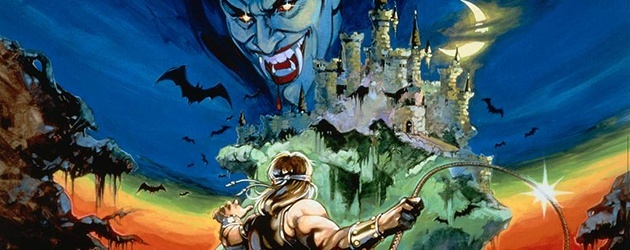
10. Castlevania: Circle of the Moon
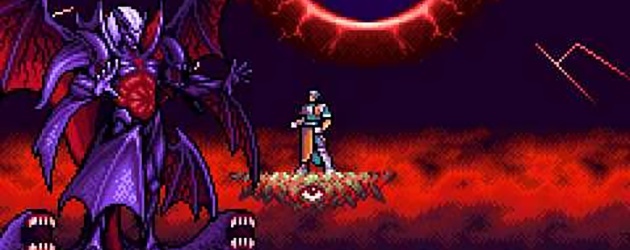
Back when the original Game Boy Advance hit, people actually took issue with Castlevania: Circle of the Moon because it accompanied the handheld at launch, so was chastised for being so dark in graphical tone that even under a direct light-source people struggled to see exactly what was going on. Rather than this being the game's fault, though, it was mainly due also to the dire GBA screen with its lack of any type of back- or even front-lighting. Konami relented and tried to adjust Harmony of Dissonance to compensate, but many then bemoaned the fact that things were far too luminescent, thus detracting from the dark undertones that have been linked with Castlevania since its initial conception. The conclusion? Circle of the Moon was doing nothing wrong, and when played nowadays, there is more of an appreciation for just how impressive Konami's first GBA effort looked.
It wasn't just a looker, though, as Circle of the Moon's melodic soundtrack was praised from the rooftops by all and sundry, accompanying some extremely gratifying gameplay. Ever since Symphony of the Night hit the PSOne and revolutionised the Castlevania series, there have been constant associations, from both fans and industry-folk alike, with Nintendo's own Metroid franchise. This is certainly no insult at all as Konami ought to be praised for borrowing from the RPG-style of adventuring that worked so well and draping it across the GBA trio. The basic core remains, but Konami developed this considerably, with a sprawling castle sectioned off in such a way that players are encouraged to delve deeper and deeper, trying to uncover all of the mysteries within. A true masterpiece that has barely aged since release.
- Adam
9. Castlevania: Portrait of Ruin
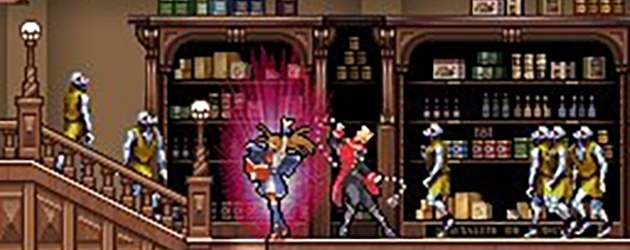
Shrinking Super Mario 64's level system down to size, protagonists Jonathon and Charlotte accessed new thematic areas by jumping into various paintings dotted about Dracula's castle. Therefore, instead of one central location to explore, there was the added bonus of tackling different worlds outside of the castle itself. Whether it really made for a grander adventure overall is debatable, and those that preferred a better sense of freedom would likely lean towards picking Dawn of Sorrow over this one, given a choice, but it took little away from being a solid Castlevania experience.
Having previously experimented with a simultaneous two-player setup, Igarashi's team allowed players to readily switch between Charlotte and Jonathon at any time, even allowing both to be brought out, with the AI taking over for the second character. This opened the door to a range of scenarios and puzzles, where the pair must work together to bypass rooms and solve riddles. It wasn't perfect, but it worked, and offered two friends the chance to experience Castlevania together. With Nintendo's pretty robust online infrastructure in place, Igarashi didn't want to miss out on incorporating an online side to things, and thankfully, it turned out pretty well.
- Az
8. Castlevania III: Dracula's Curse

Trevor Belmont, or Ralph. C if you lived in Japan at the time, played like your classic Simon Belmont. Grant the pirate could literally cling to walls and throw infinite daggers in the Japanese version, which made him completely OP, hence the change in the West. Sypha Belnades could use magic, and Alucard the Dhampyr had all the powers of Dracula himself, including the ability to transform into a bat. In addition to these, one of its defining features was its non-linearity, since several levels had branching paths, which meant that while it would only take about seven stages to reach the ending, the game actually contained double that amount, encouraging exploration.
Finally, in Japan anyway, Castlevania III contained an additional chip made by Konami itself, the VRC6, which helped improve the visuals by adding more memory, but more importantly, it brought additional saw tooth sound channels to the stock Famicom, which drastically improved the quality of both music and sound effects. The only things preventing it from holding up better today than other more recent entries are its stiff controls and unforgiving difficulty, much more so in the Western versions of it.
- Rudy
7. Castlevania: Harmony of Dissonance
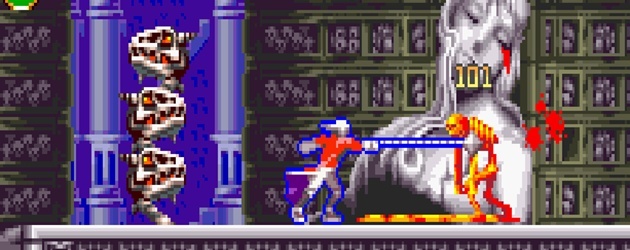
The hero only has its trusted Vampire Killer whip at its disposal, only being able to whip things straight ahead and being able to wave it around while remaining stationary. Classic secondary weapons are still present and can now be combined with a magic tome for added elemental effect that look fantastic on screen. Pretty much everything else is a direct copy/paste of Symphony of the Night, with twin castles to explore, brighter visuals, the same enemy encyclopaedia with item drop lists to complete, enemy and character sprites adapted directly from it to fit a smaller screen resolution, and funky Mode 7 special effects galore, making Harmony of Dissonance a much more visually impressive title than Circle of the Moon.
It has most of the qualities of the PlayStation title, making it indeed one of the more enjoyable experiences in the series, but it was held back by its lack of originality and a decidedly forgettable soundtrack. However, it did introduce the splendid character art of Ayami Kojima to Nintendo players, and that's something worthy of remembrance.
- Rudy
6. Castlevania: Order of Ecclesia
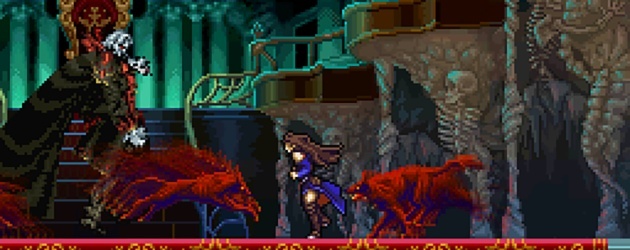
Mixing things up once again, an overworld map sees Shanoa jumping from one different area to another, allowing quick traversal across the huge world, with quests returning from Portrait of Ruin to add some character interaction and replayability, but it is in the gameplay that the biggest change from its predecessors is noticed. Rather than equipping weapons on her person, Shanoa absorbs glyphs from enemies that act in place of them, whether it is magical rapiers or spells. They may act the same as real weapons, but when used, the magic meter drains, requiring the young woman to use her glyphs in the right moments, as she must wait for her magic to refill after use.
Order of Ecclesia, therefore, feels much more like classic Castlevanias than many before it, since the need to wait whilst magic tops itself up mean enemy and boss encounters must be dealt with cleverly, with bosses, in particular, requiring movement patterns to be learned. Whilst levelling up can help to add some advantages, it isn't enough, and studying enemies and using glyphs accordingly makes for a much more difficult, but rewarding, game. For something akin to the original games, Order of Ecclesia may be the best option as far as the DS trilogy goes.
- Az
5. Castlevania: Aria of Sorrow
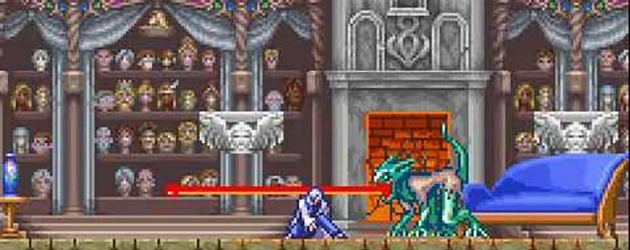
The second episode developed on a Nintendo system by Konami Computer Entertainment Tokyo, Aria of Sorrow introduced the soul system, where enemies may occasionally allow the hero Soma Cruz, a young man with a strange gift, to collect their souls. These grant Soma a wide array of abilities that range from allowing him to throw more secondary weapons than in any other episode so far, but to perform a myriad of different actions, opening up the gameplay drastically.
The vast range of weapons from Symphony of the Night finally made a comeback, as well, bringing this portable wonder as close to the masterpiece it took inspiration from as the hardware itself would allow. Ayami Kojima lent a hand for the last time on a Nintendo system with the character art of this game, and they are absolutely gorgeous. Aria of Sorrow would only rank higher today if the technology itself had allowed it at the time.
- Rudy
4. Super Castlevania IV
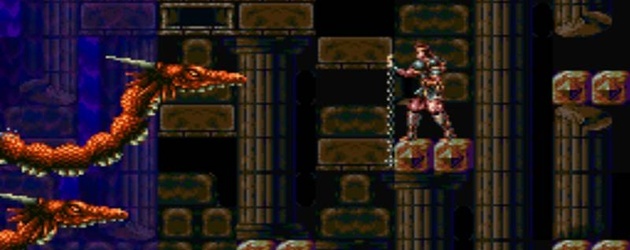
It is fair to point out that this is one of the easier games in the classic series, especially compared to Castlevania III and the X68000 entry. Simon is more durable than he's ever been, life-restorative meats can be found in candles as well as walls, and his angular-whipping technique is a bit overpowered. This makes for a more approachable game, and veterans are liable to find more of a challenge by imposing limitations. This can include relying less on special weapons, refraining from food, or simply not dying at all.
The greatest success of this entry is how it pulls together many crucial elements to deliver a Castlevania that everyone can enjoy. The controls are superb, the soundtrack is excellent, and most importantly, the game respects the player. Every stage and boss is appropriately balanced, so the player won't get stuck for an inordinate amount of time, nor find themselves bored out of their wits by overlong stages where nothing interesting happens.
- Gabriel
This is the first Castlevania game I played and I haven't since experienced one better. That's including Symphony of the Night, which I disliked because of the loss of the tightly focused linear format. It was an early release, so has strong association with a great time in my life. I was single in my own house when I bought this and spent many happy hours with it when the beer tokens ran low. Eight-way whipping is one of the main reasons why I found it hard to adjust to other entries in the series. Great level design incorporating some nice Mode 7 set pieces and an astounding soundtrack make up for the slightly jilted feel to the controls. I still have the cartridge, boxed with manual and in lovely condition, and is worth quite a few quid, but I can't see me ever parting with it.
- Davy
3. Akumajou Dracula X: Rondo of Blood
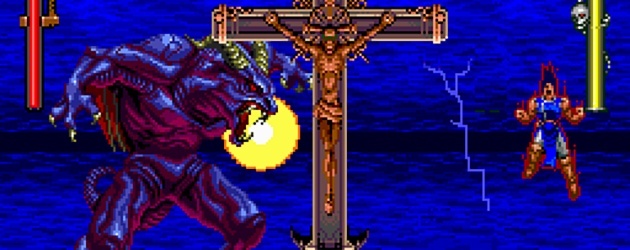
Super Castlevania IV was more of a retelling of the original Castlevania, which itself has already been retold twice before in the Arcade and would go on to be retold for the third time two years later on the Sharp X68000. Akumajou Dracula X, though, went backwards a little bit in terms of gameplay, and went forward in pretty much all other aspects. A CD release, it offered the best Castlevania soundtrack ever, full stop. Not even Symphony of the Night can compare to the redbook audio afforded by the CD medium on NEC's machine. It offered fully voiced-over cinematics close to an anime style within the constraints of what the machine could afford, two playable characters, and a more non-linear adventure akin to the excellent structure of Castlevania III, whereas SCIV went backwards to a more straightforward approach.
Akumajou Dracula X, an originally Japan-exclusive entry, remained a very sought after title until its eventual re-release on the PSP in remade form, though the 3D graphics and clunky controls ruined it a little bit, but that included the original versions of both this and Symphony of the Night, so the compilation Dracula X Chronicles still comes highly recommended for those two alone. It is also still available to this day on the Wii Virtual Console, too.
- Rudy
2. Castlevania: Dawn of Sorrow
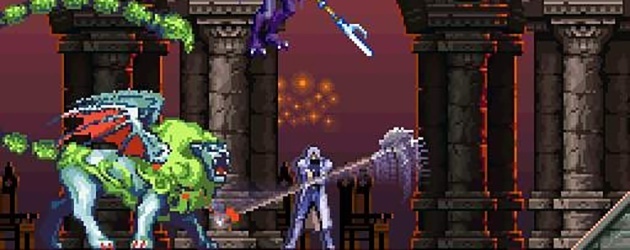
No handheld before the DS would come close to the original PlayStation in terms of graphical fidelity, either, at least in the 2D department. In this regard, Dawn of Sorrow didn't disappoint. Everything that made Symphony of the Night great visually was made possible on the Nintendo DS, too. 3D background graphics, some excellent 3D modelled enemies in places, and a gigantic castle to explore in this 64MB cartridge game.
The only things holding back the title in terms of presentation and, by extension, in overall mood were the audio, which, quite understandably, never quite reached CD levels of quality, and the anime art style, which, while not bad by any means, does kill a little the overall level of coolness afforded by Ayami Kojima's masterfully designed portraits in the original PlayStation release, as well as GBA's Aria of Sorrow and Harmony of Dissonance. Everything else is right up there with the very best the series has ever offered, though—all of that on a handheld, no less.
- Rudy
1. Castlevania: Symphony of the Night
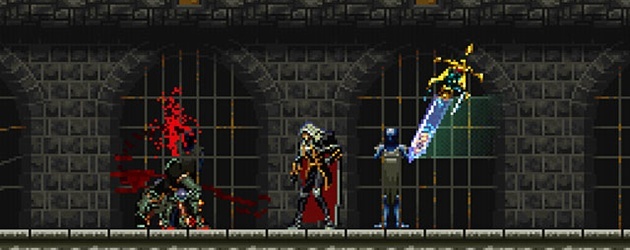
The result is a game that, contrary to most of its contemporaries, stands the test of time better. Indeed, early 3D games are hard to look at these days, but pixel art-based 2D games of this calibre hold up well. It's tight, it controls wonderfully, and if all that wasn't enough, it paved the way for the next generation of Castlevania games by introducing single-handedly what we've come to know since as the Metroidvania genre. Symphony of the Night for the PlayStation did that.
This game was then ported, though admittedly not very brilliantly so, to the SEGA Saturn, with some extra content that remains exclusive to that platform to this day, and was re-released numerous times for various platforms since then, including the Xbox Live Arcade, on which it made waves by being the first title allowed to exceed the initial file size limitations imposed on the platform.
For all those characteristics of the stuff of legends, though, it did not shine in sales initially, but those that did play it remember how awesome it was and still remains. Subsequent Metroidvania releases in the franchise did not quite manage to capture the same quintessential quality, though some came close. The original Metroidvania remains the top one to this day, not unchallenged, but unmatched for sure.
- Rudy

 Sign In
Sign In 22.12.2016
22.12.2016  jesusraz
jesusraz 
 Link to this post:
Link to this post: 
 ) with the more recent games by Mercury Steam, is that they reset the storyline. They threw everything out the window to reboot it. The series didn't need a reboot, there was still room for more games that would have built upon the back story of already released ones. What happened in 1999 with Julius Belmont? Or how about a game about Morris Baldwin from Circle of the Moon? We know he faced Dracula before when he appears as an old man in that game, I want to know! But that will never happen now will it? Shame on you Konami for alienating fans of a franchise that had been running for 24 years up to that point. 24 years for nothing.
) with the more recent games by Mercury Steam, is that they reset the storyline. They threw everything out the window to reboot it. The series didn't need a reboot, there was still room for more games that would have built upon the back story of already released ones. What happened in 1999 with Julius Belmont? Or how about a game about Morris Baldwin from Circle of the Moon? We know he faced Dracula before when he appears as an old man in that game, I want to know! But that will never happen now will it? Shame on you Konami for alienating fans of a franchise that had been running for 24 years up to that point. 24 years for nothing. Subscribe to this topic
Subscribe to this topic Features
Features





 Top
Top

